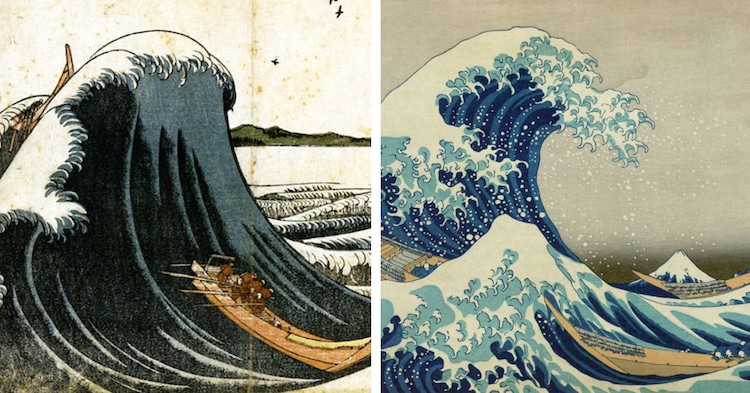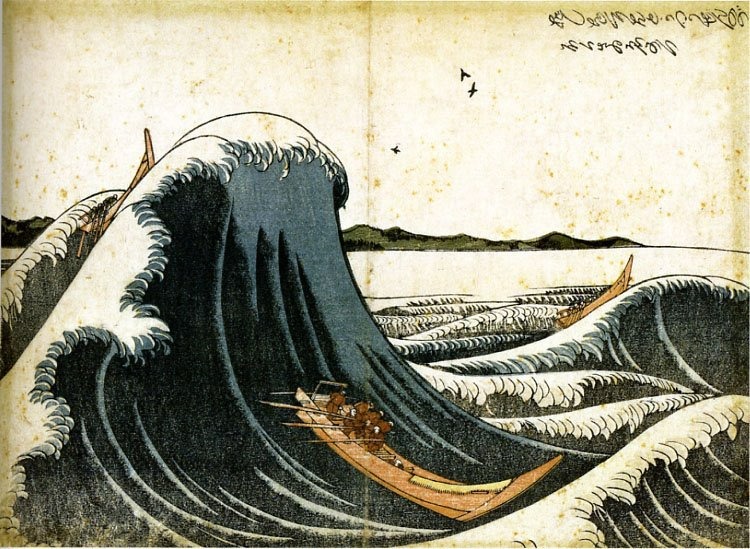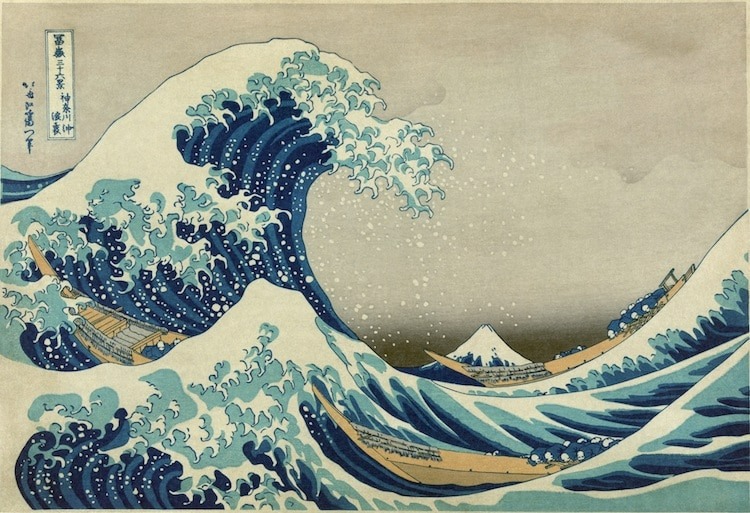
Hokusai’s The Great Wave off Kanagawa is an iconic image, instantly recognizable and a cornerstone of Japanese art. However, what many may not know is that this powerful scene wasn’t a singular stroke of genius, but rather the culmination of a creative exploration that spanned over several years. Unveiling these early sketches offers a fascinating glimpse into the artistic evolution that led to Hokusai’s masterpiece.

Hokusai’s exploration of this motif began in 1797, when he was just 33 years old. His work, Springtime in Enoshima, portrays the wave as part of a larger scene. Here, a group of figures occupy the foreground, sharing the spotlight with the water’s dynamism. This early piece is characterized by delicate lines and an abundance of detail, showcasing a young Hokusai’s meticulous approach.

Six years later, in 1803, Hokusai crafted his second precursor to The Great Wave: View of Honmoku off Kanagawa. This work features a muted color palette and a clear shift in focus. The wave, now considerably larger, shares the stage with a passing ship. While still stylized, the wave itself is simplified, its form suggested by minimalist contours rather than intricate details.

Hokusai continued to refine his vision. Fast Cargo Boat Battling The Waves, completed in 1805, retains some elements from the previous piece, including the prominent boat and the simplified wave crest. However, a crucial change occurs in the composition. The wave is relocated from the left side of the scene to the right, a decision that would ultimately define the composition of his most famous Great Wave.

It’s no surprise that this later work emerged as Hokusai’s most successful creation, especially considering his own artistic perspective. He once remarked, “From the time I was six, I was in the habit of sketching things I saw around me. Around the age of 50, I began to work in earnest, producing numerous designs. It was not until my 70th year, however, that I produced anything of significance.” The exploration of the wave motif, evident in these early sketches, serves as a testament to Hokusai’s relentless pursuit of artistic mastery, a pursuit that ultimately culminated in the iconic masterpiece we know and admire today.

Leave a Reply